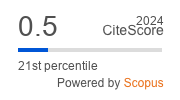Case of step-by-step combined treatment of a patient with a ruptured aneurysm of the ophthalmic segment of the internal carotid artery
https://doi.org/10.47093/2218-7332.2021.277.02
Abstract
Aneurysms of the internal carotid artery are the second most common among cerebral aneurysms. When an aneurysm is located in the ophthalmic segment of the internal carotid artery (ICA), the intravascular treatment method is a priority. At the same time, the treatment of recurrent and non-radially switched-off aneurysms of this localization remains a subject of discussion.
Case report. We present a 42-year-old patient with a ruptured ICA aneurysm who was admitted in a serious condition. Initially, the patient underwent partial occlusion of the aneurysm cavity with endovascular coiling. In the control cerebral angiography 3 months after the haemorrhage, the recanalization of the aneurysm was verified, which served as an indication for repeated surgical intervention. We preferred the microsurgical method of treatment. A control angiographic study 1 year after the second operation confirmed the radical shutdown of the aneurysm.
Discussion. The presented case illustrates the need for a flexible approach in the treatment of complex paraclinoid aneurysms. The choice of endovascular treatment of such aneurysms in the acute period of haemorrhage is justified as the most sparing, although less radical. Depending on the nature of the embolization performed, the timing of the control angiographic examination should be selected individually and can be reduced to 2 months. If there are indications for repeated surgical intervention, it should be performed by the safest method, providing total shutdown of the aneurysm and reducing the volumetric impact of the aneurysm dome on the optic nerve.
About the Authors
D. V. LitvinenkoRussian Federation
Cand. of Sci. (Medicine), neurosurgeon, Department of Neurosurgery No. 2
167, May 1 str., Krasnodar, 350086
Тел.: +7 (928) 217-86-34
E. I. Zyablova
Russian Federation
Cand. of Sci. (Medicine), Head of the Radiology Department
167, May 1 str., Krasnodar, 350086
V. V. Tkachev
Russian Federation
Dr. of Sci. (Medicine), Head of the Department of Neurosurgery No. 2; Associate Professor, Department of Surgery
167, May 1 str., Krasnodar, 350086
4, M. Sedin str., Krasnodar, 350063
G. G. Muzlaev
Russian Federation
Dr. of Sci. (Medicine), Professor, Head of the Department of Neurology and Neurosurgery
4, M. Sedin str., Krasnodar, 350063
References
1. Okuyama T., Sasamori Y., Takahashi H., et al. Study of multiple cerebral aneurysms comprised of both ruptured and unruptured aneurysm – an analysis of incidence rate with respect to site and size. No shinkei geka. 2004; 32(2): 121–125. PMID: 15031972
2. Shekhtman O.D., Ehliava SH.SH., Pilipenko YU.V., Konovalov A.N. Planirovanie khirurgicheskogo lecheniya bol’shikh i gigantskikh anevrizm vnutrennikh sonnykh arteriĬ na osnovanii ikh topografo-anatomicheskikh variantov. [On the classification of large and giant paraclinoid internal carotid artery aneurysms]. Zhurnal Voprosy Neirokhirurgii Imeni N.N. Burdenko. 2017; 81(4): 17–25 (in Russian). https://doi.org/10.17116/neiro201781417-25. PMID: 28914867
3. Nieuwkamp D.J., De Gans K., Algra A., et al. Timing of aneurysm surgery in subarachnoid haemorrhage – an observational study in The Netherlands. Acta neurochir (Wien). 2005; 147(8): 815–821. https://doi.org/10.1007/s00701-005-0536-0. PMID: 15944811
4. Steiner T., Juvela S., Unterberg A., et al. European Stroke Organization. European Stroke Organization guidelines for the management of intracranial aneurysms and subarachnoid haemorrhage. Cerebrovasc. Dis. 2013; 35(2): 93–112. https://doi.org/10.1159/000346087. PMID: 23406828
5. Molyneux A.J., Kerr R.S., Yu L.M., et al. International subarachnoid aneurysm trial (ISAT) of neurosurgical clipping versus endovascular coiling in 2143 patients with ruptured intracranial aneurysms: a randomised comparison of effects on survival, dependency, seizures, rebleeding, subgroups, and aneurysm occlusion. Lancet. 2005; 366(9488): 809–817. https://doi.org/10.1016/S0140-6736(05)67214-5. PMID: 16139655
6. Krylov V.V., Grigor’eva E.V. KT-angiografiya anevrizm golovnogo mozga. [CT-angiography of brain aneurysms]. Moscow: PrintStudio, 2020, 216 p (in Russian)
7. Connolly Jr E. S., Rabinstein A. A., Carhuapoma J.R., et al. Guidelines for the management of aneurysmal subarachnoid hemorrhage: a guideline for healthcare professionals from the American Heart Association / American Stroke Association. Stroke. 2012; 43(6): 1711–1737. https://doi.org/10.1161/STR.0b013e3182587839. PMID: 22556195
8. Ehliava SH. SH., Belousova O. B., Pilipenko YU. V., et al. Khirurgicheskoe lechenie bol’nykh s anevrizmami sosudov golovnogo mozga v ostroi stadii razryva: dinamika rezul’tatov za 2006–2018 gg. [Surgical treatment of patients with cerebral aneurysms in the acute stage of rupture: dynamics of results during 2006–2018]. Zhurnal Voprosy Neirokhirurgii Imeni N.N. Burdenko. 2019; 83(5): 5–13 (In Russian). https://doi.org/10.17116/neiro2019830515. PMID: 31825370
9. Kalani M.Y.S., Park M.S., Taussky P., McDougll C.G.Flow diversion of tandem cerebral aneurysms: a multi-institutional retrospective study. Description: New York: Thieme, 2018. P. 118–124.
10. Mitchell B., Aguilar-Salinas P., Aghaebrahim A.N., Sauvageau E. Low diverters for brain aneurysm treatment: intraprocedural complications and management. In book: Flow diversion of cerebral aneurysms. 1st Edition. Chapter: 15 Publisher: Thieme Medical Publishers Editors: Park M.S., Taussky Ph, Albuquerque F.C., McDougall C.G. 2018. P. 110–117.
11. Cagnazzo F., Perrini P., Dargazanli C., Lefevre P.-H. Treatment of Unruptured Distal Anterior Circulation Aneurysms with Flow-Diverter Stents: A Meta-Analysis. AJNR Am J Neuroradiol. 2019 Apr; 40(4): 687-693. https://doi.org/10.3174/ajnr.a6002. PMID: 30872418
12. Brinjikji W., Murad M.H., Lanzino G., et al. Endovascular treatment of intracranial aneurysms with flow diverters: a metaanalysis. Stroke.2013; 44(2): 442–447. https://doi.org/10.1161/STROKEAHA.112.678151. PMID: 23321438
13. Campi A., Ramzi N., Molyneux A.J., et al. Retreatment of ruptured cerebral aneurysms in patients randomized by coiling or clipping in the International Subarachnoid Aneurysm Trial (ISAT). Stroke. 2007; 38(5): 1538–1544. https://doi.org/10.1161/STROKEAHA.106.466987. PMID: 17395870
14. Raymond J., Guilbert F., Weill A., et al. Long-term angiographic recurrences after selective endovascular treatment of aneurysms with detachable coils. Stroke. 2003; 34(6): 1398–1403. https://doi.org/10.1161/01.STR.0000073841.88563.E9. PMID: 12775880







































